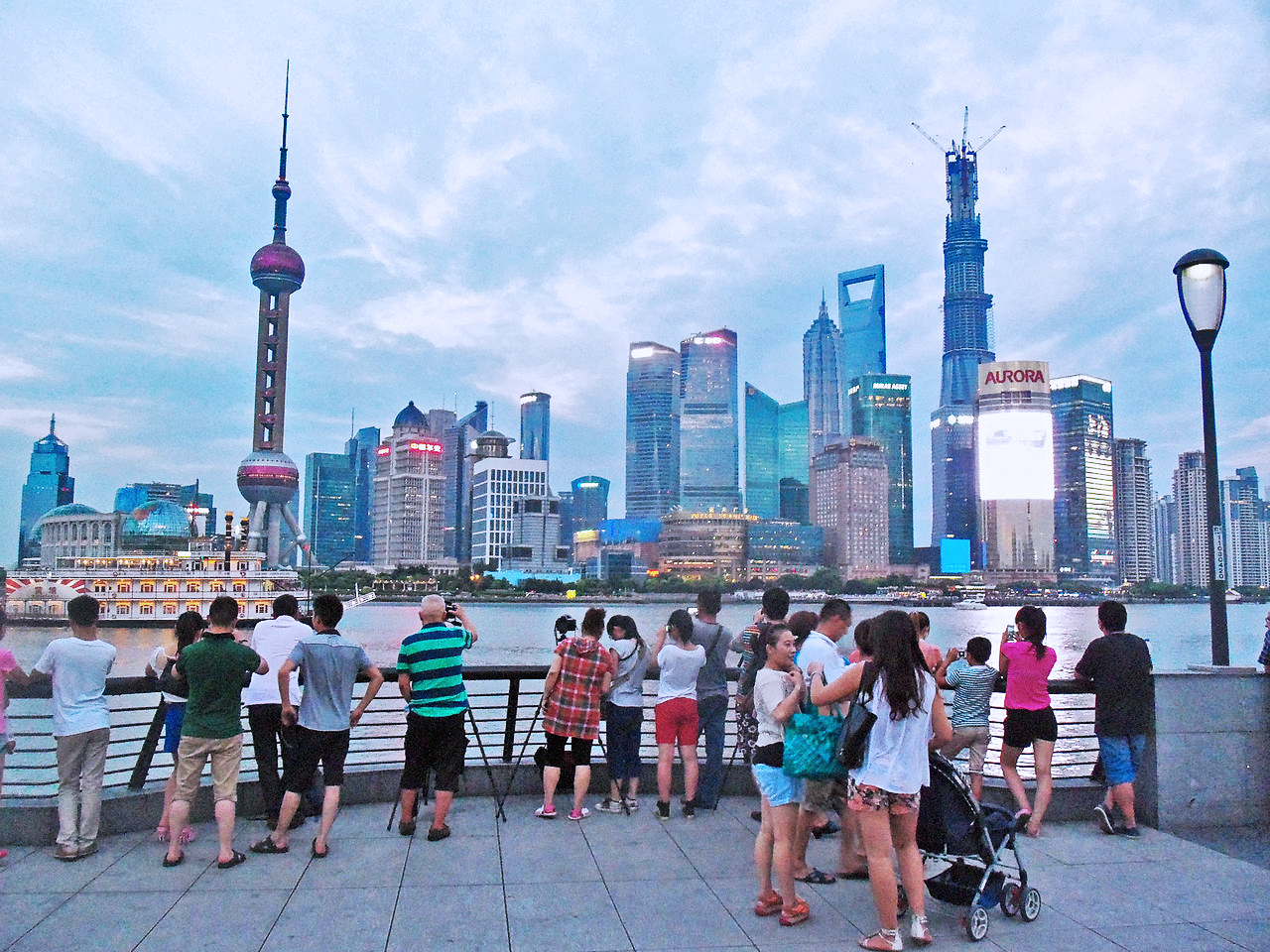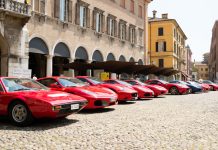Tourism is among the largest industries in the world and many people assume that humans engaged in leisure travel from earliest times. In reality, tourism emerged much more recently. It developed as a product of modernisation but also played an important role in shaping the experience of modernity. This article traces that story from the eighteenth century to the present day.
Scholars disagree about the precise definition of “modernity” and about what makes up the “modern world”, but they nearly all concede that part of the definition involves thinking differently from those who came before. We imagine ourselves to be modern, the product of relentless progress that started when hunter-gatherers learned to farm and created the first urban centres. Moderns value technology and science, view landscapes in ways different from those in the past, and celebrate individualism to a degree not previously known. We think we’re better than those before us, more sophisticated and advanced, probably smarter. All this sets us apart.
Most of us do not think very much about tourism and yet it played an important role in enshrining the thought patterns mentioned above. This pastime/industry acted (and acts) as a teacher: educating us about politics, history, science, environment, technology, and much more besides. It helps to define who we think we are, who we think others are, and the relationships that exist between us.
Today, tourism is among the world’s largest industries. The United Nations World Tourism Organization (UNWTO) says that in 2015 the industry grew at a rate of 4.6% reaching 1,184 million tourist arrivals. Such growth rates are not new and date back with few exceptions to the early 1950s. Projections are that the expansion will continue for the foreseeable future, reaching as high as 1.8 billion annual international tourist arrivals by 2030. Such numbers are impressive — and very valuable. International tourism generated U.S.$1.5 trillion in export earnings in 2015.
It was not always so. Tourism itself is modern.
Leisure travel as we know it started to emerge in the seventeenth and eighteenth centuries. It began as a way for Queen Elizabeth I to educate the ambassadors that would be necessary to carry out ever more complicated international politics. Most English elites had scant understanding of their Continental counterparts. The educational system, such as it was, was steeped in a narrow focus on the Classics, so aristocrats read Latin and Greek, and spoke English rather than the vernacular languages that were increasingly needed to engage with French, Italian, or Dutch traders and politicians. Elizabeth started to pay her best and brightest young male subjects to visit the Continent, to learn languages, to make contacts, and to gain the tastes necessary to live abroad for extended periods. They had to develop what scholars call “cultural capital”. From the first, modern travel was connected to politics.
By the eighteenth century other aristocrats anxious to keep up with their peers started to send their sons to Europe as well. It was called the “Grand Tour”. Beyond the learning outcomes expected from the trip (languages, etc.), these young 16- to 20-year olds were supposed to develop aesthetic sensibilities, ideas that they would bring back to their estates. By putting their tastes on display in their manor houses and surrounding grounds, aristocrats could show themselves cultured, they could stress their social class and their power. Little has changed. We still gain prestige by having visited exotic locations, by being able to tell stories of travel adventures, by showing how our tastes reflect our travels.
The results of the Grand Tour often failed to match lofty goals. Rather than spend their time learning, many passed their days drinking, gambling, and sleeping with prostitutes. Consequently, the “tourists” earned a rather less than stellar reputation. It was so upsetting that parliament considered legislation banning returning young men from speaking with faux-French or Italian accents, failing to celebrate the glories of roast beef, from gesticulating like a stereotypical Continental merchant, or from using the French word “canaille”.
If travel produced anxiety at home, however, it also had its advocates. Better, these proponents said, that wild oats be sown abroad. As long as the bad behaviour didn’t continue at home, it was all for the good. What happens on the Grand Tour, stays on the Grand Tour.
The Napoleonic Wars effectively ended the eighteenth-century Grand Tour, but the accounts of travel that were written about that experience inspired the tourists of the 1800s. What was more, new steam-powered transportation — first steamboats, then trains — made it faster and cheaper to travel. Where once it took days or weeks to reach a destination, and while that journey was inevitably uncomfortable, now such concerns were evermore mute.
Almost from the debut of steam travel, working class organisations and later middle class tourism developers presented offerings aimed at nearly all economic and social groups. There were day trips for workers, global explorations for the rich. The existence of vast nineteenth-century empires meant that white and wealthy travellers could go just about anywhere in the world.
But it wasn’t merely the possibility of going someplace. The trip itself was an attraction. Tourism promised travellers the opportunity to experience a new type of mobility. Trains, for example, were almost as big an attraction as was wherever the train was going. People lined the tracks to see the new iron horses. They debated whether speed might kill, whether the noise might make people go mad, whether livestock in the vicinity of a railway might be rendered unproductive or worse by the thundering “clap clap clap” of heavy wheels on metal rails.
Later, the invention of automobiles and airplanes had a similar impact. These machines democratised travel, truly opening the possibility of exploration to virtually everybody. It took little time for automobile clubs and oil companies to issue maps, guides, and even educational videos designed to teach people to take vacations. Tourism and technology were intimately connected, a relationship that continues today if in a less overt way.
Guidebooks, maps, postcards, and other such “cultural mediators” told people what ought to be seen. They carefully described the best place to stand when gazing at a view. They celebrated a particular aesthetic perspective (itself a product of late eighteenth century Romanticism) and promised the tourist a sort of transcendence that was, in reality, often elusive. There is a reason that we nearly all take the same photographs when we travel, all shot from the same vantage points and framed in nearly identical ways.
The elements of modern tourism were all well established by the dawn of the twentieth century. As important as the technology and the ways of seeing the world through a tourist lens was the fact that the practice was now heavily democratised. Given time off, most people could be tourists. Once again, politics entered the frame.
In the years after the Great War, regimes representing every major political ideology saw in tourism a way of reaching out to the masses. Russian communists imagined tourism as a way of teaching citizens to be better Soviets and to eschew bourgeois notions of leisure as a pointless waste. It was better to use travel to bring health and to raise productivity. Time off was good for the soul and for the state. Democratic governments viewed tourism as a way of emphasising the joys of individual choice. Many went further, offering guaranteed vacation time for all workers, “holidays with pay”. And fascist programs, such as the Nazi regime’s Kraft durch Freude (KdF; or “Strength through Joy”), used tourism as a means of showing how the government was working for the people to provide cheap trips. More chillingly the KdF strove to teach Germans to be better Nazis. Destinations were selected to showcase German economic strength as compared with the turmoil still suffered in other places during the Great Depression. Organised trips could be utilised to teach specific behaviours deemed to be suitably German. And most horrifying, the right packaging made it possible to educate the people about their racial superiority to Jews, blacks, and other non-Aryans.
By the time World War II ended, people from across the social spectrum expected to be tourists; tourism developers as well as both national governments and international organisations were keen to help them. Indeed, tourism development represented fuel for postwar reconstruction.
The United States made tourism development in Europe a priority, one of three major areas (alongside industry and agriculture) targeted by the European Recovery Program, or Marshall Plan. Governments were encouraged to expand tourism, given instruction in how to run hotels in a manner attractive to Americans, and provided financial resources to make it all happen. When states dragged their feet, as happened in Ireland, Marshall Planners were not immune from making threats: develop tourism or face the end of American aid. It took little time for even the most reluctant political leaders to fall in line.
Of course, tourism development was not entirely a US-led mission. Countries around the world were keen to benefit. International organisations quickly formed — emblematic of a new approach to political and economic development that relied on international organisations and which took root after the war. The European Travel Commission was the first such transnational tourism organisation, but it was definitely not the last.Similar groups, anxious to combine forces to market their distinctive tourist products, popped up in South and Central America, the Middle East, Africa, the Caribbean, and Asia. There was even a global organisation, the International Union of Official Travel Organisations (IUOTO). It eventually merged with the United Nations and is now known as the World Tourism Organization.
Wartime austerity quickly gave way to peacetime prosperity and travel was among the most sought after commodities. Holiday camps, theme parks, travel magazines and more beckoned to an increasingly affluent middle class in both Europe and the United States. New technologies created during the war — jet engines and pressurised airplane cabins, for example — rendered travel that much quicker, more comfortable, and affordable. Like trains or cars before, leaving on a jet plane was an exciting prospect.
Growth was rapid, stunningly so. In fact, the practice of tourism was by now so widespread that people virtually took it for granted. They assumed that humans had always traveled for fun, that leisure time was always spent in pursuit of adventures abroad. People had always been tourists.
Of course, they hadn’t. Instead, the combination of politics and economics, technology and social climbing had come together to create a new way of looking at the world that enveloped virtually all of the hopes, dreams, and aspirations that make up a modern worldview.
About the Author
 Eric G. E. Zuelow is author of A History of Modern Tourism (Palgrave, 2015) and editor of the Journal of Tourism History (Routledge). He is an associate professor of European History at the University of New England in Biddeford, Maine.
Eric G. E. Zuelow is author of A History of Modern Tourism (Palgrave, 2015) and editor of the Journal of Tourism History (Routledge). He is an associate professor of European History at the University of New England in Biddeford, Maine.

































































